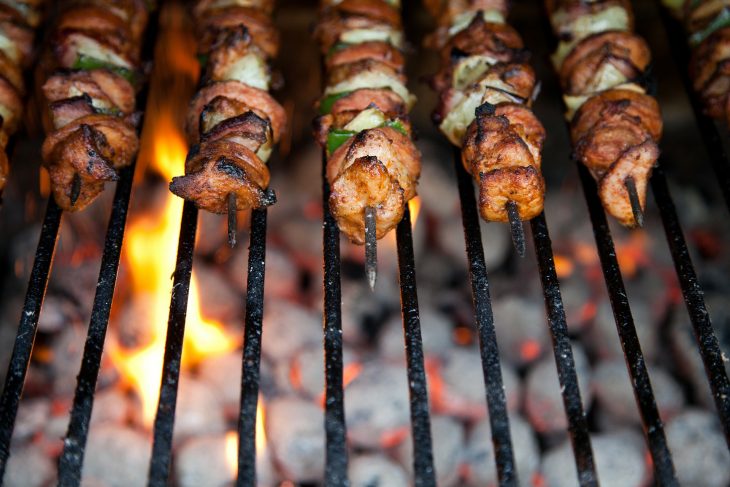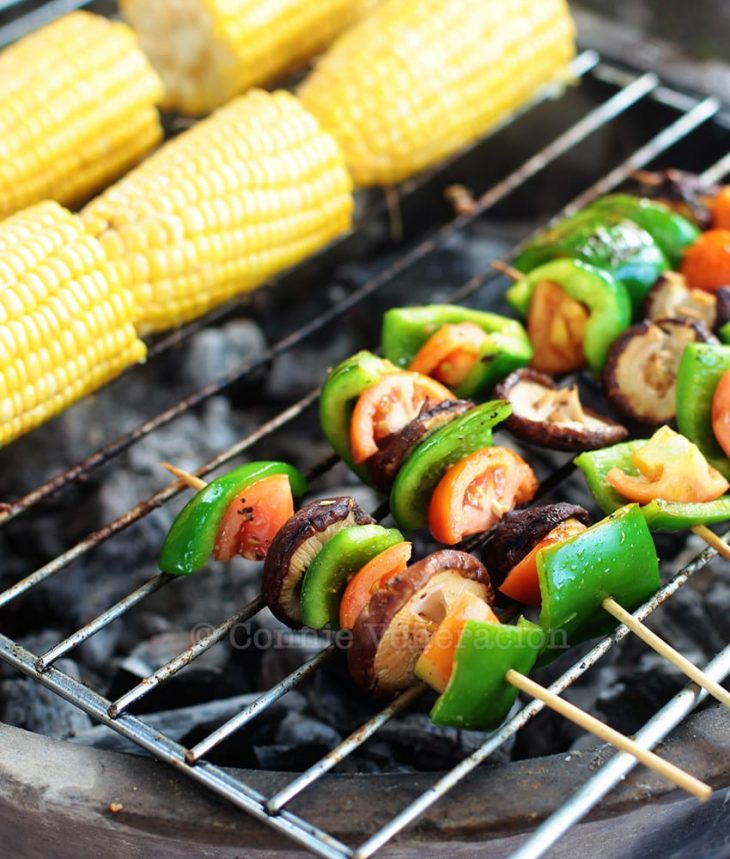Normally, monsoon season should be in full swing by June. Not this year though. It’s mid-June and while we get showers now and then, the days are still mostly sunny and humid. And “sunny” does not mean you want to get out there and bask under the sun. Oh, no. Not in Southeast Asia. In fact, the Philippines’ Department of Health has issued repeated advisories that, unless absolutely necessary, everyone should stay indoors and hydrated.
This “extended summer” has one advantage though. For households with backyards that have well-shaded spots, grilling fun goes on until the typhoons dictate otherwise. And for you in the Northern hemisphere where summer is just beginning, it’s the best time of the year to get grilling. To get the most out of your grilled food, here are a few thoughts.
Grilling as a cooking method

Grilling is more than placing a rack over hot charcoal and arranging the food on the rack. Grilling is more than being able to flip burgers or steaks on a rack or turn skewers this way and that. Just like frying, the objective of grilling is to quickly sear the surface of the food over high heat while retaining as much internal moisture as possible. Unlike frying, grilling uses direct dry heat.
The key to successful grilling is to find the right temperature to sear the food and cook it through without burning the surface. If the heat is too high, the surface will burn before the inside is cooked. If the heat is too low, the food will steam, lose moisture and turn dry by the time it is cooked through.
As a general guide, consider these three things:
1. The distance of the rack from the heat;
2. The ability and ease to control the temperature; and
3. The size of the food that you are cooking.
Naturally, thinly sliced skewered pork, for instance, will cook much faster than bone-in chicken wings, chops or steaks. If you have a grill with a deep vessel for the charcoal, for instance, to generate low to medium heat, you can use just enough charcoal to coat the bottom and place the rack directly on the rim of the vessel. But if the vessel is shallow, you may have to move the rack higher especially when grilling larger chunks of food.
Numbers 1 and 2 above are relative to the kind of grill you’re using.
Kinds of grill
Grilling with charcoal
Charcoal grilling gives food an incomparable smoky flavor and aroma. But getting the right temperature can be tricky.

How does one set the correct temperature on a charcoal grill?
My default setting for a charcoal grill is to keep the rack at least six inches from the heat. Instead of moving the rack up or down to control the temperature, the heat is adjusted by the amount of charcoal glowing during the grilling. Need ultra high heat. Then, fill the vessel with charcoal and set them all alight. Need medium heat? Use less amount of charcoal.
Some say that smoking (barbecue) and high temperature cooking (grilling and frying) can cause the formation of carcinogens in food. It is a very controversial issue and one worth reading up on to determine what are hard facts and what are scare stories. That is something I will leave to you.
Grilling with charcoal is also considered to be not-so-eco-friendly. If you’re concerned about that, consider other types of grill.
Gas grills
There are several models of gas grills. Some come with their own stand (usually with a kind of cabinet where you can put your gas tank) while others are small enough to be portable and set on any sturdy non-flammable surface. There are also built-in gas grills.
Gas grills are either powered by natural gas (the kind installed in most houses in the Northern hemisphere) or propane (more popularly used in Southeast Asia).
And propane is…??? The kind you buy in a tank to which you attach one end of a hose with the other end attached to the grill.
Propane is LPG? According to one website, propane is LPG but not every LPG is propane.
Most built-in gas grills are configured to feed on natural gas although they can be converted to be compatible with propane. Almost all stand-alone gas grills are powered by propane.
Just like a gas stove or a gas oven, the temperature of a gas grill is controlled by a knob or series of knobs.
Electric grills

Just like gas grills, electric grills come in stand-alone, portable and built-in models. What we have at home is a portable electric grill.
Our electric grill is easy to use and easy to clean. We can even use it indoors. The downside is that, depending on the model, an electric grill can be a huge power guzzler. And the grilled food does not acquire a smoky flavor.
Electric grills come with temperature control switches. Turn a knob or push a button and the correct temperature is set. Super convenient. Takes the guesswork out of grilling.
Stovetop grills
Some stovetop grills have two parts: a shallow bowl at the bottom and the rack on top. This model recommends adding water to the bowl before grilling. We used of have one like this but it didn’t perform very well. It corroded fast too.

Another model is the one shaped like a baking tray with ridges on the surface (to raise the food and prevent steaming) and a canal all around the perimeter (to catch the fat that drips off the food). This is the kind we have been using at home for the past several years.
Just place on the gas stove (depending on the size of the grill, you may need to turn on one or more burners), control the temperature through the burners and you’re set. The only downside to the stovetop grill is that when grilling fatty food, the rendered fat will accumulate on the grill. You will have to throw out the fat from time to time. Otherwise, you will end up frying instead of grilling your food.
What’s the best grill for home use?
When we’re cooking a daily meal, the electric grill or the stovetop grill works well. But when we have company and a huge amount of food has to go on the grill, indoor grilling is not fun. The heat from the grill and the smoke will stifle everyone in the house. So, for parties, we prefer the old-fashioned way of grilling with charcoal—outdoors. It’s really much more fun.